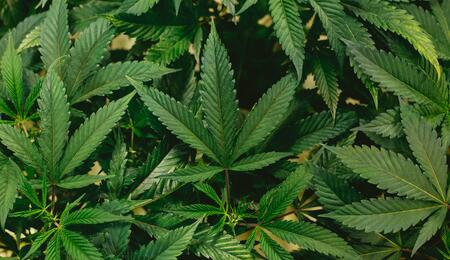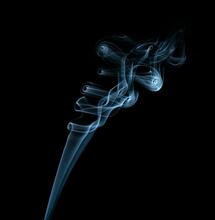Medical Cannabis

A therapeutic joint works, but should be considered a primitive treatment method. The therapy should rather consist of herb teas, or drops of either tincture or concentrated extract dissolved perhaps into olive oil. For pains or muscular contractures, an ideal treatment is the topical application of creams and ointments. However, a vaporiser is the most suited method of delivery if you cannot resist the idea of inhaling cannabis for its immediate effects to meet an urgent need, and for a decisively stronger effect than that of tea.
Flame or electric vaporisers can both be found on the market. In the latter case, machines delicately warm up herbs without burning them, thereby causing the evaporation of active ingredients, as one of the most sensible ways of taking cannabinoids. Vaporiser are sold in various models, and those branded Volcano are among the few that have been scientifically tested.
They are suited to users with sensitive lungs, people with respiratory diseases or those who cannot stand smoking, and patients with very debilitated bodies, who wish to avoid heavy doses of toxins. With a vaporiser, the characteristics of active ingredients remain unchanged, as they are taken in their purest form and the development of potentially carcinogenic combustion products causing irritation in the respiratory tract can be avoided. In practice users breathe less tar, as vapour is free of coal and solid materials, and the ill-advised intake of monoxide is also avoided.
In 2007, a survey conducted by the University of San Francisco, California titled “Marihuana Vaporizer Provides Same Level Of THC, Fewer Toxins: Study Shows” proved the effectiveness of the vaporiser in delivering the same therapeutic chemical ingredients, thus producing the biological effects of cannabis smoking while avoiding its harmful toxins.
Vaporisers are a guarantee of proper medical administration and their potential for minimising respiratory problems was also recognised by the researchers of the US Albany University in the paper “Pulmonary Function in Cannabis Users: Support for a Clinical Trial of the Vaporizer”, published in 2010 in the International Journal of Drug Policy. After one month of observing twenty regular consumers of marijuana who had undergone a single administration through a vaporiser, the researchers could demonstrate the effectiveness of this method for the significant improvements found in the patients’ respiratory functions.
Technically, cannabinoids evaporate at 185°C (365F°) and if a vaporiser is set at the right temperature, as shown in the paper “Cannabis Vaporizer Combines Efficient Delivery of THC with Effective Suppression of Pyrolytic Compounds”, published on the Journal of Cannabis Therapeutics in 2004, users can inhale them in the cleanest possible way.
In using the Volcano tabletop model, we recommend inhaling small quantities (100 mg of herb) at 210°C (410°F) in a single balloon. 100 mg contains 19 mg of THC on average, 8 of which will remain deposited in the balloon while 5.5 will be delivered to the bloodstream, after the absorption of vapour droplets through the lung alveoli. If symptoms are cleared, that will do. Otherwise the quantity of cannabis should be increased or, alternatively, temperature should be reduced to below 200°C (392F°) if the effect is too strong or the vapour sizeably irritates the lungs.
In particular, in a paper titled "Cannabis Vaporization: A Promising Strategy for Smoke Harm Reduction", published in 2001 in the Journal of Cannabis Therapeutics under the aegis of the US anti-prohibitionist NORML, significant traces of benzene were found in vapour at a temperature exceeding 200°C, which was likely to cause discomfort among the most sensitive users.
Alternatively, the vaporising chamber may host up to 500 mg of herb, which can be vaporised at a temperature below 185°C by filling the balloon several times. In this case, the delivery is gradual but dosage less constant. If cannabis is vaporised repeatedly, it will gradually lose its therapeutic value and taste. The first inhalation is the best as, in this case, evaporation only relates to resin crystals, but then further inhalations gradually attack the vegetable fibre as well.
After the evaporation of the full resin, residual dehydrated herbs may be added, for instance, to the compost to be used for plants and, for those who have a mystical approach to cannabis, this is somewhat a less serious sin than burning herbs.
Vaporisers should be supplied to the National Health Service. Users can build their own (see the procedure on YouTube) or use their savings to buy one, as a good investment for their health and wallets. You will surely smoke less or quit smoking, and you will save much in terms of cannabis quantities, rolling papers, filters and tobacco. If, for example, a patient smokes 1 gram of marijuana a day, half could suffice with the use of a vaporiser, thus optimising consumption.
Personally, I found that, in the treatment of backache due to incorrect posture, the same type of marijuana is ineffective if inhaled as smoke, especially if mixed with tobacco, but heals the pain if taken in the form of vapour, as it clears the respiratory tract and gives relief. In case of backache, for instance, as cannabis improves the control of the body and vapour does not affect the lungs, I try to direct the inhaled cannabinoids towards the back of the lungs, close to where the pain is, and breathe by moving the aching part of the body. If you observe a dog breathing (animals are generally more adapted to life on earth than humans are), you will notice without difficulty that, when they breathe, they move all of their body, not only their belly. This type of breathing is very natural and healthy, and for those who cannot do without it, due to illnesses or emotional blocks, it can be eased by vaporising marijuana with lungs totally full.
Vaporisers avoid smoking damage, are self-dosing and, as they do not affect the respiratory system, are also ideal tools for sports and marijuana lovers, to clean the lungs and get stronger. It is also a good match for meditation and therapeutic gymnastics, such as yoga and tai chi, which are particularly effective in the improvement of a person’s mental and physical state and may favourably enter a therapeutic procedure with ganja plants.



